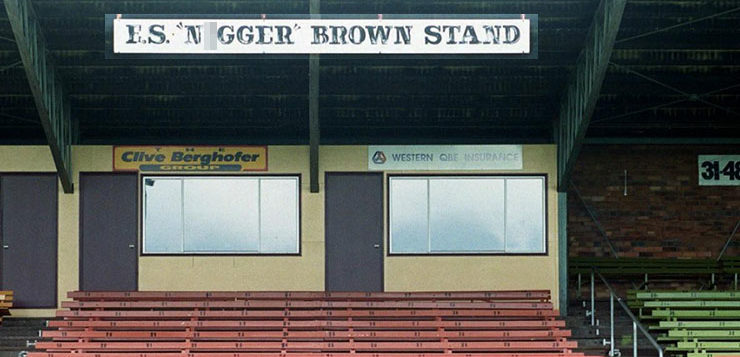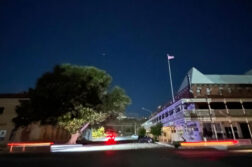New Matilda editor Chris Graham is on the road again, camping as he traverses the NSW outback. As part of his trip, he’ll be bringing you occasional blog posts from country towns, significant places and faraway spaces that he happens across along the way, with an emphasis on politics and history. Particularly politics.
I’m headed from Minjerribah (Stradbroke Island) where I live, to Broken Hill in the Far West of NSW.
It’s a long drive, a bit over 1,500km, and I’m headed there via Walgett, Brewarrina and Bourke – three significant towns in the north west of NSW, which substantial Aboriginal populations.
My trip to ‘The Hill’ is to work on a film about the Darling River. It won’t be finished until 2020, but this visit is timely, given the number of fish the NSW and federal governments have managed to kill there in recent weeks.
As I write this, there was another major fish kill at Menindee in the Darling overnight. It’s the third in less than a month. More on all that later.
My first stop was in Toowoomba, a city with which I’ve had a fairly antagonistic past. In 2002, Aboriginal activist and a former NAIDOC Person of the Year, Stephen Hagan began a lengthy campaign to get a massive sign removed from the local sports oval.
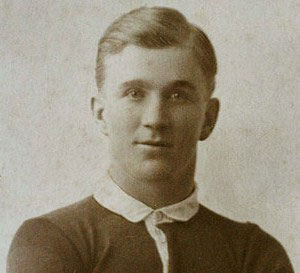
Called the “E.S. ‘N*gger’ Brown” stand, it was built in 1960 as a tribute to Edwin Stanley Brown, a former rugby league international who played in the Kangaroo’s tour of Great Britain in 1921-22.
Edwin was known around town as ‘N*gger’ – a play either on his favourite colour of shoe polish, or possibly a reference to his excessively white skin (e.g. Australians like to call people with red hair ‘Bluey’, because apparently calling something the opposite of what it is is funny and creative). Either way, obviously, it was spectacularly racist then, just as it’s spectacularly racist today, because contrary to popular opinion, calling someone the N-word in the 1960s was not considered okay. It just happened to be widespread. #straya
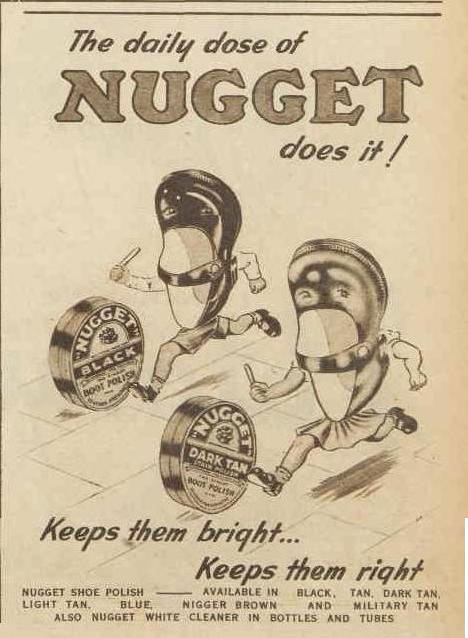
But given Brown was known locally as ‘N*gger’, and given Australia has never really been known for its sensitivity to the feelings of people who aren’t white, the town figured including his nickname in the grandstand was not only okay, but a fine tribute to a fine man.
And that’s how, in a more modern context, it led to ground announcers at the turn of the millennium declaring to visitors to the oval that they could get drinks and sausage sandwiches from the canteen situated “behind the N*gger Brown stand”.
By some local accounts, the N-word part of the ground announcement was always delivered with extra oomph, and to lots of local snickering.
It ultimately became symptomatic of that very Australian brand of loophole racism – ‘it might be a racist thing to say, but you can’t prove I’m racist by saying it’.
In any event, Hagan’s campaign went nowhere locally – the Toowoomba Sportsground Trust and the local council had no interest whatsoever in removing or renaming the stand. It also went nowhere nationally – a case in the Federal Court and two appeals were unsuccessful. So Hagan took his fight overseas, complaining to the United Nations that the sign was in breach of the UN’s International Convention on the Elimination of Racial Discrimination.
Then UN Secretary General Kofi Annan referred the matter to the ‘CERD’ – the Committee on the Elimination of Racial Discrimination that oversees the convention, and they agreed with Hagan, directing Australia to remove the sign in 2003.
“ …The Committee considers that the memory of a distinguished sportsperson may be honoured in ways other than by maintaining and displaying a public sign considered to be racially offensive. The Committee recommends that the State party take the necessary measures to secure the removal of the offending term from the sign in question, and to inform the Committee of such action it takes in this respect.”
For its part, Australia informed the CERD they could piss off. While Australia ratified the Convention in 1975, it explicitly rejected Article 14, which establishes a complaint mechanism for people to have the CERD consider their issues. In other words, we’ve signed up to the Convention, provided we don’t have to answer to anyone else when we’re in breach of it.
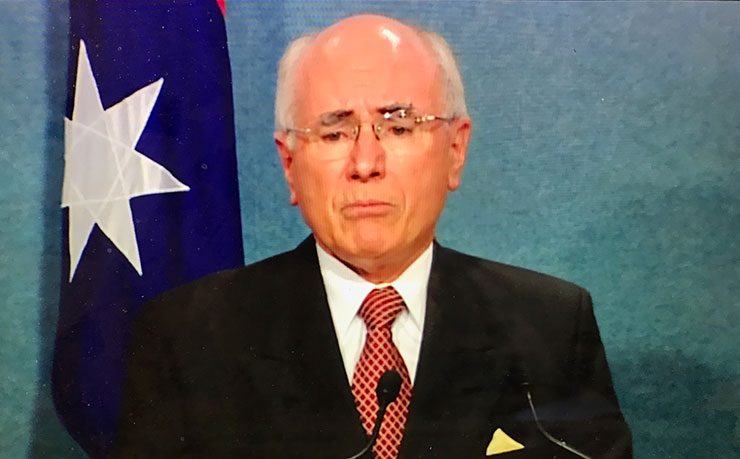
Enter the Howard government, an administration not exactly known for its sensitivity towards people of colour, nor matters of racism. It responded to the UN’s criticism by claiming that the use of the word ‘N*gger’ in public – even in massive lettering on a public grandstand – didn’t always equate to racism.
Queensland Premier Peter Beattie agreed, noting in the base populist style for which he would become infamous, “[Edwin Brown] was called that name in a different time and a different generation.”
Yes. He was. And now he was still being ‘called that name’ in a different time and generation, namely this time and generation, when it’s widely considered deeply offensive, particularly when it’s in huge lettering on a grandstand or via a booming voice over a PA system.
In any event, a stand-off ensued for the next five years. The Sportsground Trust and the Queensland and Australian Governments refused to budge, while Toowoomba built itself a reputation – fairly or otherwise – as a redneck town full of redneck people. Every now and then the story would make headlines around the world, particularly in the US, and Australia would respond by pretending it didn’t know what all the fuss was about.
Finally, the matter blew back onto the news media radar in late 2008, when it emerged that the old grandstand was going to have to be torn down for safety reasons. The community of Toowoomba couldn’t hide it’s disappointment, with the offending sign secreted away for posterity, and a lamentful obituary of sorts in the local paper.
Fast forward to 2019, and my arrival in Toowoomba earlier this week, having not visited the town for well over a decade, and having not written on the issue for almost as long.
Surprisingly, today, there’s no sign whatsoever of ‘ES N*gger Brown’, neither at the Toowoomba Sports Ground nor anywhere else in town (that I could find). There’s no statue, as had been threatened by the Trust; there’s no plaque, as had also been threatened by the Trust.
Where the grandstand use to be, there’s literally just rows of red fold-up seats in the open air, backing onto the once infamous canteen.

As I wandered the grounds looking for evidence of Toowoomba’s racist past, and possibly it’s enduring racist present, I happened upon a local worker. I told him I was looking for the ‘statue’ honouring ES Brown.
“No, there’s no statue,” he replied. I asked about the plaque. “No, there’s nothing. No record of him at all.”
The worker seemed a little sheepish about my inquiry, apparently either aware of (and possibly embarrassed) by Toowoomba’s racist past, or possibly just sick of people turning up and asking about it.
Whatever the truth, Toowoomba may well have erased a pretty unsavoury relic from its past, but I suspect the stain that came with it will take a few more years.
Onwards and upwards… to the Far West of NSW. Talk to you from there.
Don’t miss the news – Click here to get our free email digest direct to your inbox.
Donate To New Matilda
New Matilda is a small, independent media outlet. We survive through reader contributions, and never losing a lawsuit. If you got something from this article, giving something back helps us to continue speaking truth to power. Every little bit counts.

